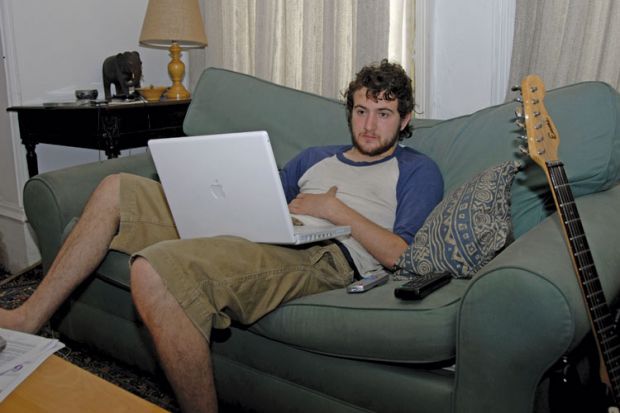Academics’ fears that making video recordings of lectures available will reduce student attendance are misplaced, a study suggests.
Computer scientists at Queen’s University Belfast who monitored the introduction of lecture capture on their courses concluded that it had not had a negative impact on attendance, and that students had instead used the footage to reinforce traditional learning.
In a paper presented at the annual conference of the British Educational Research Association, held at Queen’s from 15 to 17 September, the researchers say that reduced attendance had been a key concern among staff prior to the introduction of lecture capture on the postgraduate programme in software development.
In a survey of 80 students conducted prior to the start of the course, 27 per cent said that, if a video was available, they would no longer regard attendance at lectures as being integral to their learning.
But analysis of attendance figures revealed that lectures on a programming module, edited highlights of which were put online, had higher average attendance – 86 per cent – compared with a databases course, where highlights were not put online. The average attendance for the databases module, which was taken by the same cohort over the same semesters, was 81 per cent.
While the researchers acknowledge that a range of factors may affect lecture attendance, the results were in line with historical attendance data that predated the introduction of lecture capture.
In a post-course survey, 96 per cent of students said that the availability of footage had had no impact on their attendance.
Aidan McGowan, lecturer in computer science, who conducted the study with colleagues Philip Hanna and Neil Anderson, said that academics should embrace lecture capture.
“If lecturers are concerned that students are not going to be in front of him or her, that’s not an issue,” Mr McGowan said. “It’s definitely a reinforcement, rather than a replacement for lectures.”
Using data from the course’s private YouTube channel, the researchers found that the videos that had tended to prove most popular were those that were linked to assessments.
In the post-course survey, 98 per cent of students said that revision in preparation for an exam was a primary reason for viewing a video.
The researchers found that, once a video was started, viewers watched 40 per cent of the footage on average. But there was significant variation depending on the length of the highlights, with the top 10 performing videos averaging five minutes in length, and the bottom 10 averaging more than 20 minutes.
The researchers were also able to analyse which parts of the video were rewound and replayed by students most frequently, allowing them to identify concepts that students found complex or confusing, and that might require reinforcement in later lectures.
POSTSCRIPT:
Print headline: Video lectures fail to thin crowd
Register to continue
Why register?
- Registration is free and only takes a moment
- Once registered, you can read 3 articles a month
- Sign up for our newsletter
Subscribe
Or subscribe for unlimited access to:
- Unlimited access to news, views, insights & reviews
- Digital editions
- Digital access to THE’s university and college rankings analysis
Already registered or a current subscriber? Login






